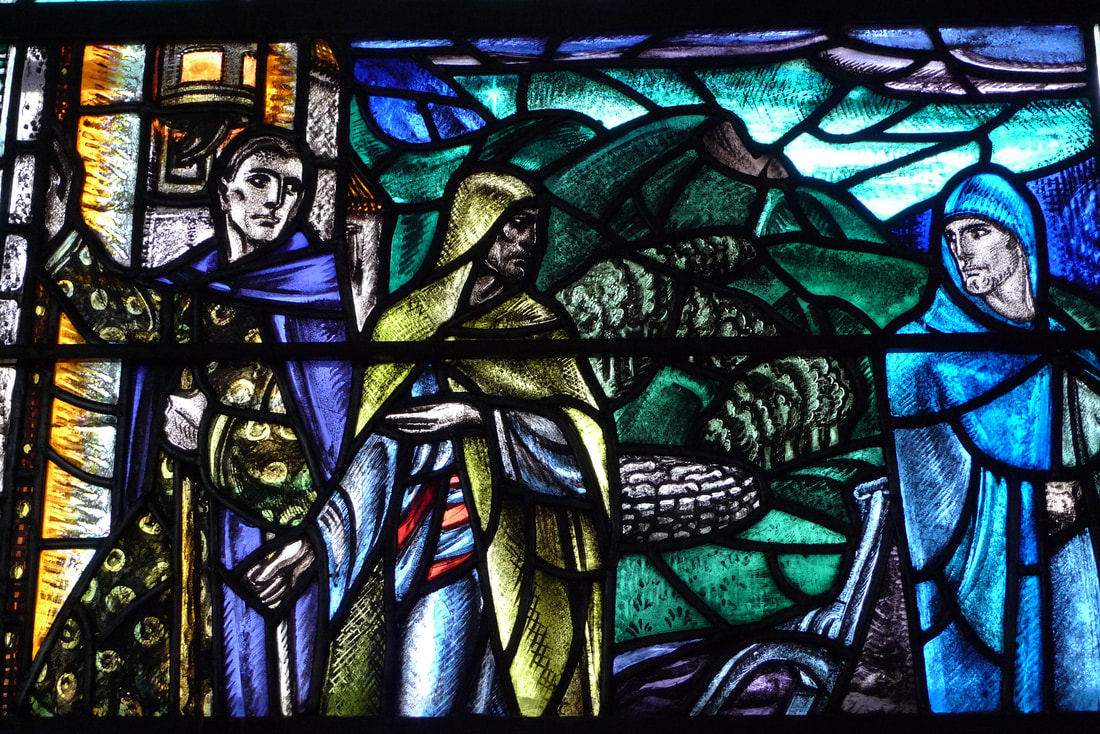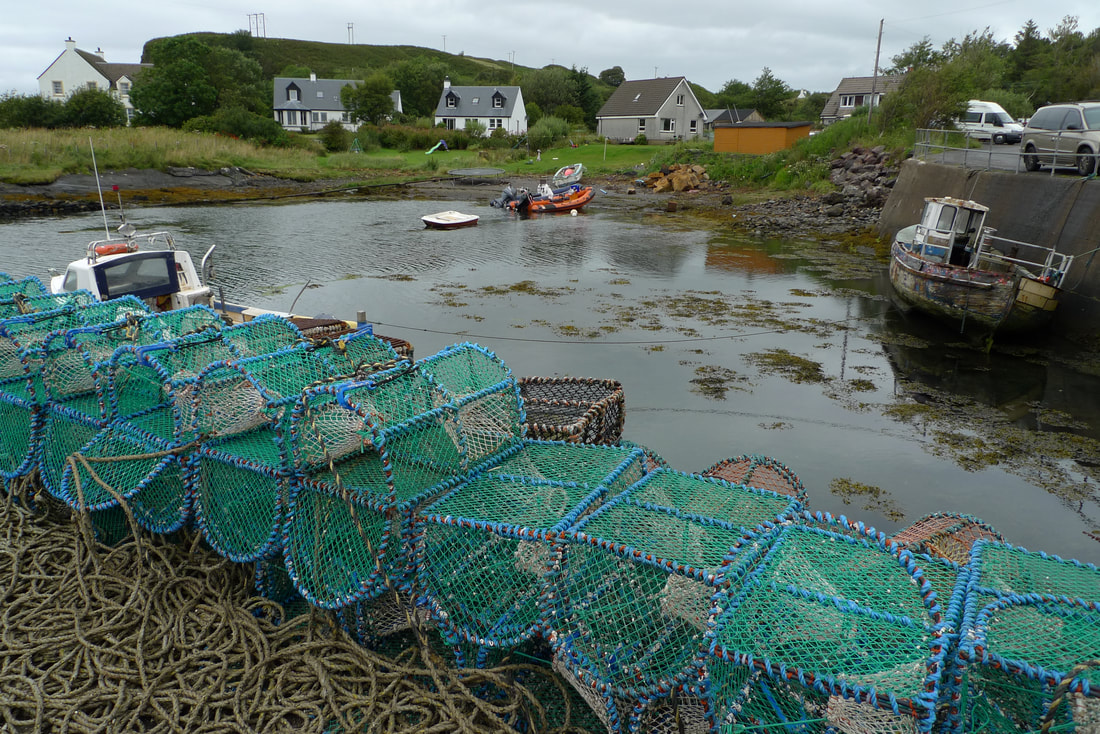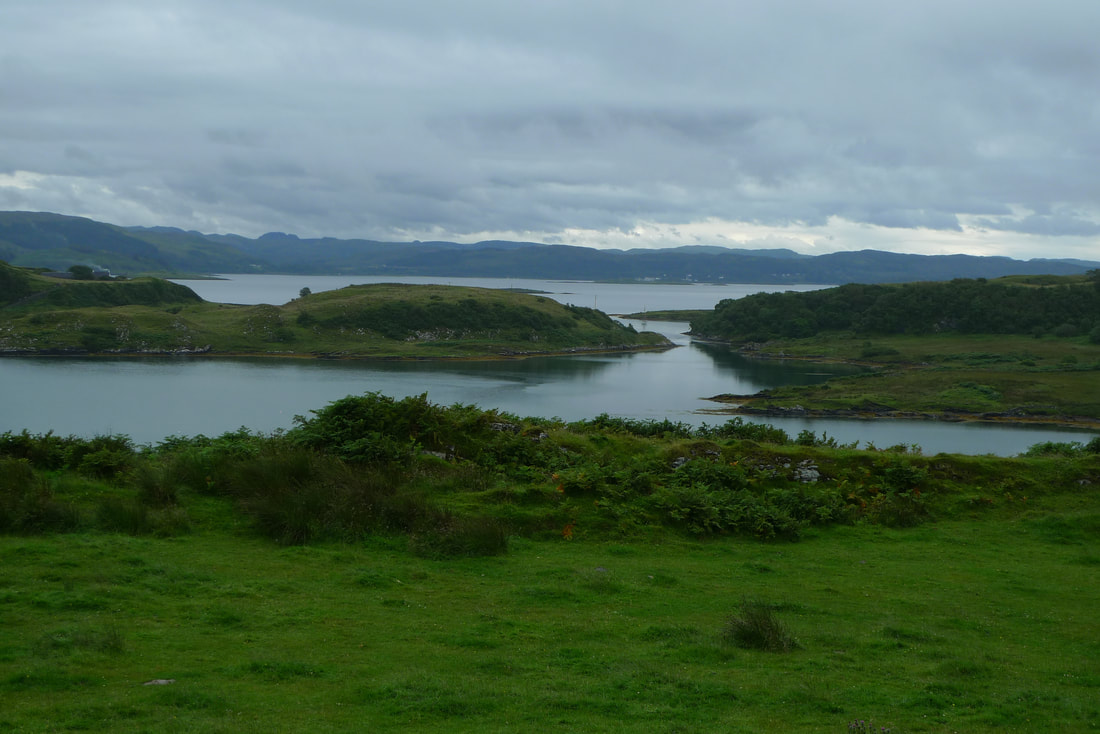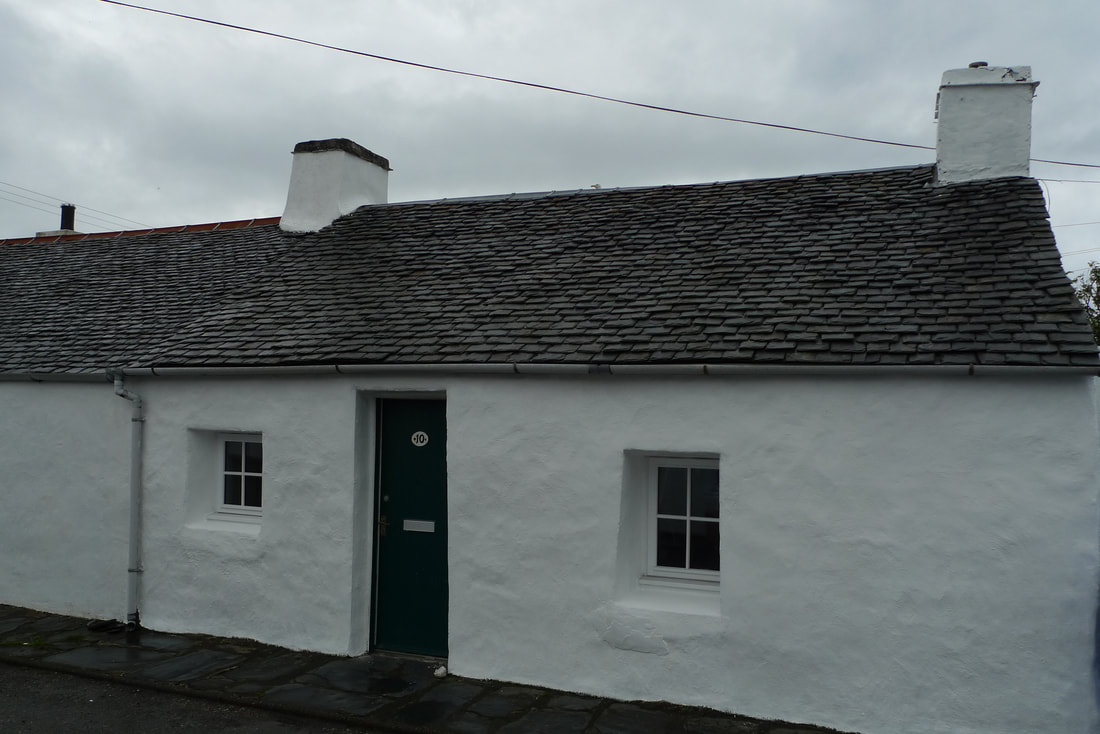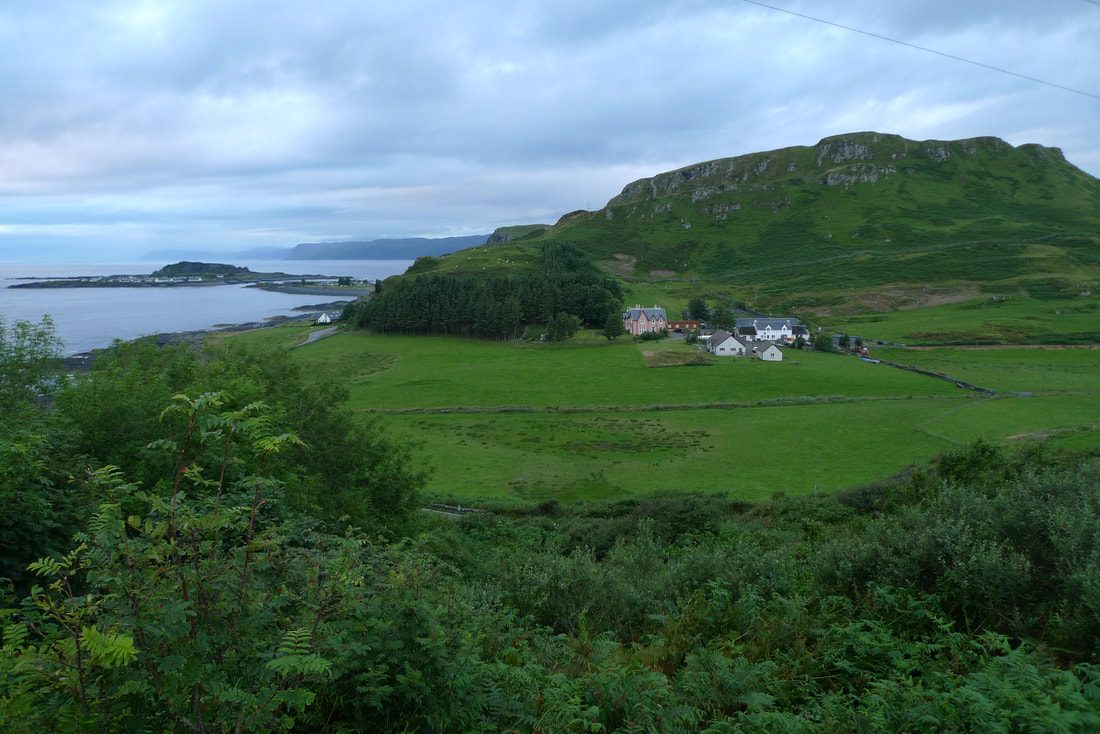|
They were known as the islands that roofed the world because of their huge slate deposits. The Slate Islands have a rich industrial heritage in beautiful surroundings. They are 12 miles south of Oban and a joy to explore by bike.
Highlights
Getting there
The first step is to travel the 12 miles from Oban to the Clachan Bridge, the 'bridge over the Atlantic.'
The Clachan Bridge takes you over to the Isle of Seil, the northernmost Slate Island. The single-track road on the island feels like it's a guest here, almost overwhelmed by the trees, ferns and grasses that enclose it.
Kilbrandon Church
Three miles from the Clachan Bridge you'll find this gorgeous church. The interior is worth seeing with the stunning stained glass windows beautifully framed by the bare stone walls.
From the church there's a view to Ballachuan Loch, surrounded by the lush greenery that carpets the island. Beyond the loch and across the sound are the hills on the mainland. They look imposing and rocky.
Ferry to Luing
Just under a mile from the church is Cuan where you can catch the ferry to the Isle of Luing.
The ferry runs every 30 minutes and the crossing takes about 5 minutes.
Even a short ferry trip has a restorative effect. There's something about the motion, the sound of water against the hull and the sea spray that makes you go into an almost meditative state.
How I felt coming here was perfectly summed up on one of the island's tourist information panels: "Isle of Luing- a place to think, a place to be."
Arriving in Luing the rain came on heavy. I sheltered in the ferry waiting room. It's kitted out with cushions, a stack of magazines and a noticeboard with community information.
Views and perfect roads
There's a steep climb to leave the ferry dock, but the views are spectacular at the top. Even with clouds and mist the composition of water, islands and hills would sell a million postcards.
I knew immediately that I wanted to spend longer here. Reader, you should come here and enjoy this road. There's hardly any traffic and the green colours and landscape textures will make you smile all the way.
At one point the road was blocked by a cow that was not for moving. She stood her ground as I carefully went around.
Cullipool
Around 2.5 miles from the ferry is Culipool. It's the largest settlement on the island, but that doesn't mean it's a busy place. Quite the opposite. The streets of white cottages were quiet and I didn't see another person.
It's very different to how this place must have been when the slate quarry was operating. It once employed 175 men and these cottages were their homes.
The quarry closed in 1965 and its remains are a fascinating, alien word. There are big hillsides in various states of destruction.
Men were once suspended by rope from the top of these hills. They drilled holes and packed them with gunpowder. The blasts left these hills looking like something from a sci-fi film set. The ground is littered with shattered slate of all different sizes and shapes.
The beach at Cullipool is covered in shards of slate. When the waves roll in they push and then pull the slate. The sound this makes is gentle, soothing. It's a memory that will stay with me long after I depart these islands.
I had to catch the last ferry back to the Isle of Seil so I couldn't spend any longer on Luing. If I am lucky to return one day I would visit:
The ferry was busier this time. The vehicle deck was so full that a van was on the ramp with its rear wheels dangling over the water. Ellenabeich, Isle of Seil
It's about 3.5 miles from the ferry to Ellenabeich, the largest village on the island of Seil.
It's another settlement with rows of white workers cottages. Some have small front gardens adorned with plants. There's a village square with a crane rescued from the derelict pier as a a focal point. There's also a shop and a classic red phone box that looks great set against the white washed buildings. The street lamps, have a vintage look, a bit like gas lamps.
The Oyster Bar is the only place for a meal. There's quality seafood, burgers, steak and more. I had chowder. This was a super tasty creamy potato broth packed with smoked salmon, smoked haddock, prawns and scallops.
A night out
A normal Tuesday night at home would probably be spent watching the TV. In Ellenabeich I went for a bike ride.
I took the hill out of the village. The view up here shows off the beauty of this place. The craggy hill, Dun Mor, dominates the scene. You can see how close Easdale Island is to Ellenabeich. This island is famous for hosting the World Stone Skimming Championships each year. Competitors use Easdale slate skimming stones in one of the disused quarries. The island is car-free as the ferry takes only passengers. I didn't have time to visit Easdale this time around.
I explored the rocky shoreline and the slate covered beaches. Apart from the gently rolling waves the only other sounds were the cry of seabirds and the occasional bleating sheep.
Garragh Mhor bed and breakfast
I stayed in Garragh Mhor on Ellenabeich. The hosts were super welcoming. They told me about the incredible wildlife on the island. Otters passed their front door a few days ago. There was a time when a guest forgot to close the door and lots of toads made their way inside! A swarm of hornets once gathered above the B&B- it was like a black cloud sitting just above the roof.
I love that conversations with B&B owners can give you a real flavour of what it's like to live in the places you visit. Oh, and the smoked salmon with scrambled eggs for breakfast was superb. My thoughts on the Slate Islands
The Slate Islands are not as well-known as other islands in Scotland, like Skye or Harris. That can make them quieter, but the experience is just as good as those other places.
I thought the scenery was spectacular. I loved the novelty of crossing the 'bridge over the Atlantic' to get to the islands and then the short ferry ride across to Luing. The quiet roads make for great cycling and the industrial heritage of the islands is a fascinating part of Scotland's history. Explore Argyll and Bute
The Slate Islands are in Argyll and Bute. You can read more blogs about this part of Scotland.
5 Comments
|
Categories
All
Archives
July 2024
|




